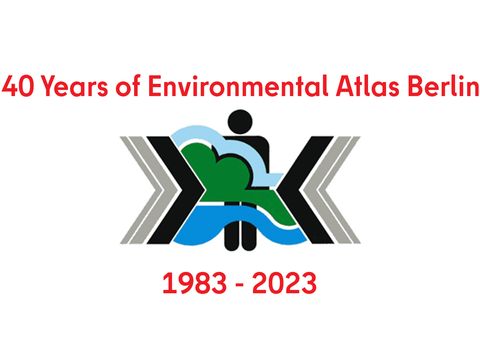With the Berlin Environmental Atlas, the Senate Department for Urban Development, Building and Housing provides spatial data on the environment. Interactive maps and their detailed descriptions form the core of the Berlin Environmental Atlas. They provide information on a wide range of topics revolving around the environment – down to specific addresses, residential blocks or boroughs. Let’s take a stroll through the European metropolis of Berlin and learn something along the way!
The Berlin Environmental Atlas provides a wide range of services to help implement the political intent of developing Berlin in a smart, sustainable and inclusive manner. The emphasis here is on sustainable urban development. This is supported by our interdisciplinary approach, which includes multiple Senate departments and administrative levels working in close collaboration – enabling us to present content to the extent and detail you see here.
Ecological responsibility and sustainable urban planning are made possible by in-depth knowledge provided by series of developments and trends of individual indicators. Based on many decades of monitoring, the Berlin Environmental Atlas can take you back in time and reveal long-term developments for a wide range of topics.
The Environmental Atlas forms a dynamic data pool, which we maintain continuously. Of course, we want to improve it, too. Your Hints and Suggestions are therefore greatly appreciated.
How to use the Berlin Environmental Atlas?
The Berlin Environmental Atlas provides detailed geodata, features and background information both for the general public and for experts from administration, planning, science and politics. Are you looking for current data on green roofs or land use? Why not give it a try? You can access both straightforward overviews and in-depth details on individual environmental indicators via the Environmental Atlas.
All information and maps are grouped into different topics. Initially, you need to select a topic or find one using the search feature. A summary of the selected topic then provides you with an informative overview. If your interest is piqued or the topic seems to match your query, you can browse the maps to learn more about this topic. Refer to the map descriptions if you require assistance in interpreting the maps.
Use the timeline to jump to earlier editions, which can help you detect trends that are developing, for example.
Geoservices (WMS, WFS, Atom feed or PDF alternatively) are available for each topic to assist in your professional work. They enable individual further use of the data in geoinformation systems or specialised programmes.
If you wish to link topics and their contents with other Senate Department geodata outside the Environmental Atlas, click on ‘Map in Geoportal’ to jump to the Geoportal Berlin (FIS Broker).
We have compiled a catalogue of usability questions and answers in our FAQ section.
By providing open-source data (OpenDataInitiative Berlin), we want to enable unrestricted further use of information. Therefore, all content is available free of charge as long as the source is cited (see Further Information).
Who is working for the Berlin Environmental Atlas?
We consider ourselves an open portal for all geodata that is created or collected in the course of action of the Senate Departments. We would not be able to offer the extensive range of services presented here, without the support of many different authorities. We would therefore like to express our deep gratitude to all our collaborators who put their trust in us.
Most topics are based on the data, expertise and commitment of a variety of our own expert departments and those of the Senate Department for the Environment, Urban Mobility, Consumer Protection and Climate Action; Economics, Energy and Public Enterprises and a variety of other authorities.
The Environmental Atlas is jointly managed by Manuel Döllefeld and Leilah Haag. We are supported both by reputable engineering offices from the fields of urban planning and environmental protection and university institutions.
